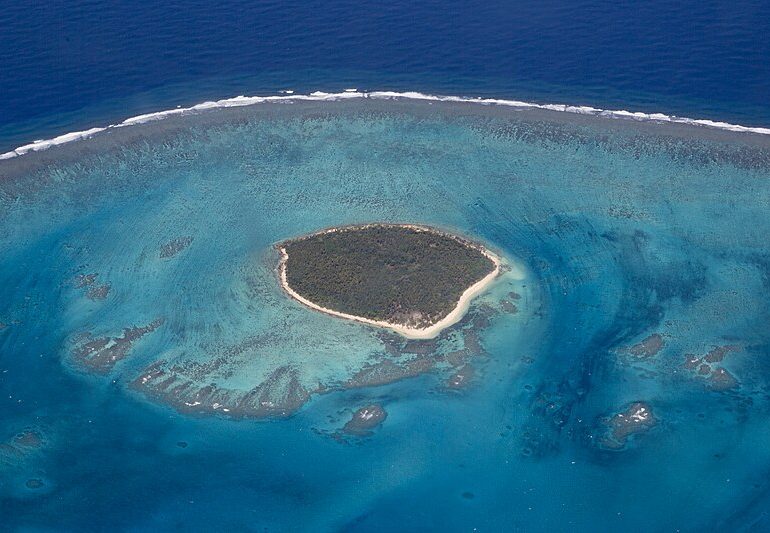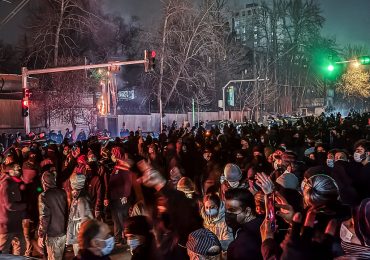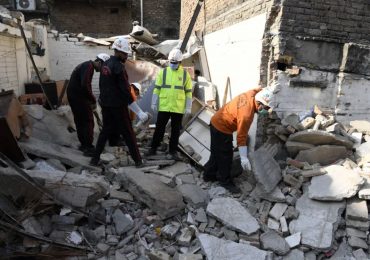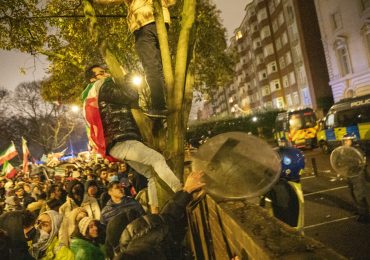HIDDEN deep in the South Pacific lies a paradise island that became the setting of a real-life story that echoes William Golding’s Lord of the Flies – but with an unexpected twist.
Far from the dark chaos imagined in fiction, the true story of six Tongan boys stranded on the abandoned island of ‘Ata after a shipwreck revealed resilience, cooperation, and hope in the face of adversity.
WikiepdiaAta Island is located south of the main islands of Tonga[/caption]
rcbregman/TwitterFriends Sione, Stephen, Kolo, David, Luke and Mano became known as the ‘Tonga Castaways’[/caption]
A still from the 1990 Lord of the Flies filmKobal Collection – Shutterstock
Similarly to the tale, the Tonga teens established a new routine in the islandKobal Collection – Shutterstock
Once a thriving community, the island of ‘Ata lies about 100 miles south of the main islands of Tonga.
In 1863, the island was tragically abandoned after a devastating incident where the majority of its inhabitants were kidnapped by Peruvian slave traders.
Those left behind were relocated by King George Tupou I to nearby islands, and ‘Ata was left to the mercy of nature — its lush greenery and rocky cliffs slowly reclaiming what human hands had built.
For decades, it stood untouched and uninhabited, a lonely speck on the map, forgotten by the outside world.
That was until June 1965, when six teenage boys from Tonga, aged between 13 and 16, set off on an impulsive adventure.
Bored of their routine at school and seeking a thrill, they “borrowed” a small fishing boat with no real plan other than to sail into the open waters.
None of them could have predicted that this reckless escape would take them to ‘Ata — and transform their lives.
Caught in a violent storm, their boat was shredded and drifted off-course for eight days.
With no food or fresh water, the boys were at the mercy of the elements.
A film still from the 1963 production of Lord of the FliesRonald Grant Archive
Kobal CollectionUnlike the Peter Brook film, the Tongan boys showed incredible friendship and cooperation[/caption]
Sione ‘Ulufonua Fataua was only 18 when he and his friends were stranded on the island.
At 73, Sione told People magazine: “The boat was all torn up — no rudder, no sails — and for eight days we drifted with no food, no rain to drink.
“We prayed, knowing only God could save us.”
By what seemed like a miracle, the wrecked group spotted land in the distance: the abandoned island of ‘Ata.
Though marooned on a desolate, uninhabited land, it would prove to be their saving grace.
REAL-LIFE ‘LORD OF THE FLIES’
The boys’ time on the island could have easily mirrored the dystopia of Lord of the Flies, a story where shipwrecked boys succumb to chaos and savagery.
Instead, the reality was one of extraordinary cooperation.
Over the course of 15 months, the boys worked together, overcoming every challenge the island threw at them.
They established routines, shared responsibilities, and built a life out of sheer ingenuity.
Using wild taro plants, coconuts, and fish, they managed to feed themselves.
They crafted shelter from banana leaves and learned to start fires by rubbing sticks together.
“We all come from close and poor families where, whatever you get, you share,” Sione said.
The boys even repurposed old tree stumps and made weights to exercise, keeping their spirits high.
When one of them broke his leg after falling from a cliff, the others meticulously set the bone using sticks and leaves as splints.
And in time, it healed completely.
Their remarkable refusal to let discord take over also ultimately saved their lives and sanity.
Whenever they disagreed, they established a routine of taking time out to cool off.
Sione, who was one of the two eldest boys at the time, recalled: “If anybody had something they didn’t like, they talked about it and we say ‘Sorry’ and then pray and everything’s okay.
“If someone got really mad — like, if I planned something and they didn’t do it — you disappear for a few hours, look at the ocean and clear it out of your mind.”
Channel 7, AustraliaThe boys survived on taro plants, coconuts, and fish[/caption]
GettyMr Peter Warner with his crew (L-R) David, John, Peter Warner, Luke, Bill, Stephen, Jim Kolo and Mano[/caption]
A MIRACULOUS RESCUE
The boys had almost become one with the island when, in September 1966, Australian fisherman Peter Warner spotted smoke rising from ‘Ata.
Warner, the son of a wealthy businessman, was puzzled. He knew the island was uninhabited — yet here was a clear sign of life.
Upon investigating, he found the six boys, now lean and weathered, but alive.
At first, Warner was sceptical of their story, fearing he had stumbled upon escaped prisoners.
But after verifying their identities, he learned they had been declared dead back in Tonga.
The boys’ families were overjoyed to hear they were alive. Warner took them aboard his vessel, ending their 15-month ordeal.
The island of ‘Ata, meanwhile, remains uninhabited, a place where nature reigns supreme.
But the story of those six boys left an indelible mark on its history.
Their journey has since been retold as a counterpoint to Golding’s vision of human nature.
Instead of falling into chaos, the boys’ cooperation and friendship demonstrated that even in the most dire of circumstances, people are capable of incredible resilience and kindness.
GettySkipper Peter Warner with (left to right) Stephen, Kolo, Luke, David, Sione and Mano[/caption]
Leave a comment








